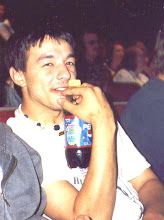RCMP on the lookout for crack from the Philippines (Canada and Philippines)
Thu, April 06 2006
By Mata Press Service
To meth smokers in the Philippines, it is known as "shabu" and "bato" (rock).
Sold on the streets for as little C$2 per gram crystal methamphetamine has become the substance of choice by Filipino drug abusers. With domestic production exceeding demand, the crack trade has gone international.
According to a 2006 report by the US State Department, the Philippines has evolved into both a source and transshipment point of crack to Canada, the United States, Guam and Saipan, Australia and South Korea.
The US noted that domestic production of meth exceeds demand, with most of the precursor chemicals smuggled into or illegally diverted after importation into the Philippines from the People’s Republic of China (PRC), including Hong Kong.
Producers make methamphetamine in clandestine labs through a hydrogenation process that uses palladium and hydrogen gas to refine the liquid mixture into crystal form.
"PRC- and Taiwan-based syndicates have established the vast majority of the Philippines’ clandestine methamphetamine labs using a network of ethnic Chinese who possess the necessary technical skills," according to the US State Department.
Illegal drugs enter the Philippines through seaports, economic zones, and airports. With over 36,200 kilometers of coastline and 7,000 islands, the Philippine archipelago is a drug smuggler’s paradise.
See the rest of the story at:
http://www.asianpacificpost.com/portal2/ff8080810a62220d010a70d03de003a7_Tutsmoker_Philippines.do.html


0 Comments:
Post a Comment
Subscribe to Post Comments [Atom]
<< Home